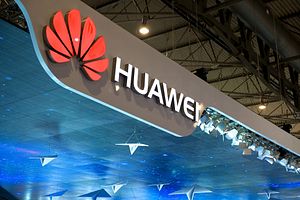Last week, reports surfaced about a plan for Huawei to build a new undersea cable between Cambodia and Hong Kong. While details remain unclear, the potentially significant plan has received its fair share of headlines given China’s growing links with Cambodia and ongoing scrutiny on Huawei as a company amid U.S.-China strategic competition.
While the focus on Huawei, including in Southeast Asia, has been dominated by 5G, it has had an involvement in other areas as well. Among these is undersea cable construction, traditionally through its subsidiary Huawei Marine (though that has been undergoing some change with a selling of its majority stake there announced earlier this month). Per Huawei Marine’s website as this is being written, the firm has 90 ongoing or completed projects with a total length of 50,361 kilometers thus far. And though that presence still pales in comparison to the dominance traditionally enjoyed by a range of firms from the United States, Japan, and Europe, Huawei has been looking to make further inroads in this respect as well.
Southeast Asia has been among the areas where Huawei has been looking to for opportunities. A prominent example of this was Huawei Marine’s role in an international submarine cable between Cambodia, Thailand, and Malaysia which involved Cambodia’s Telcothech, Malaysia’s Telekom, and Thailand’s Symphony Communication Public Company Limited. The 1,300-kilometer project, known as the Malaysia-Cambodia-Thailand (MCT) Submarine Cable System and Landing Station in Cambodia, was formally launched in March 2017 after years of work, and it made headlines in Cambodia in particular as it was the first submarine cable into Cambodia.
Last week, we saw another potential development in this regard when Huawei announced its potential involvement in a plan to build an undersea cable from Cambodia to Hong Kong. On June 17, at a meeting between Cambodia’s Transport Minister Sun Chantol and Huawei Cambodia CEO Mark Wong, Huawei announced a plan in partnership with China Communications Construction Co. to install an undersea fiber-optic communications cable connecting Sihanoukville to Hong Kong.
The development itself is far from surprising. As noted above, Chinese companies including Huawei have already had some involvement in this area in Cambodia, and in various cases, Phnom Penh has shown that it is much more interested in the opportunities these firms offer rather than the risks inherent in pursuing deals with them. Additionally, there have already been indications that something new may be in the works as well. For instance, during Cambodian Prime Minister Hun Sen’s visit to China in January, China Road and Bridge Corporation had expressed interest in investing in a submarine cable from Cambodia to Hong Kong.
Still, it is difficult to assess the potential significance of the development so early on and with so few details worked out. For now, both sides have messaged it as a plan rather than a concrete project, and reports have also surfaced casting doubt about whether it could actually materialize. For example, on June 20, China’s Global Times quoted an unnamed local public relations representative from Huawei as saying that the firm was still undecided about launching the project “as it is seeking more funding in the local market.” Such reports during ongoing negotiations are not uncommon. But coming amid other developments tied to Huawei’s prospects, including the announcement earlier this month that Huawei would sell its majority in Huawei Marine following restrictions announced by the Trump administration, they do raise questions about how rhetoric will actually translate into reality.
Even if we do get a sense of how this plan will turn into an actual project, both sides will need to disclose basic specifics, such as its costs as well as potential project timelines. As of now, it looks like even initial steps, such as an application for licenses, have yet to begun. As Telecommunication Regulator Cambodia (TRC) spokesman Im Vutha reminded Cambodian media outlet Khmer Times, neither Huawei nor China Communications Constructions Co. are on the list of four companies have been granted licenses so far to invest in submarine cables in Cambodia, and both have yet to even apply.
Of course, given the inroads we have seen made between China and Cambodia over the past few years – from new exercises to potential new facilities or bases – one should not rule out this plan eventually materializing into a project. But until more details are disclosed, this particular case very much remains more rhetoric than reality at this stage.

































